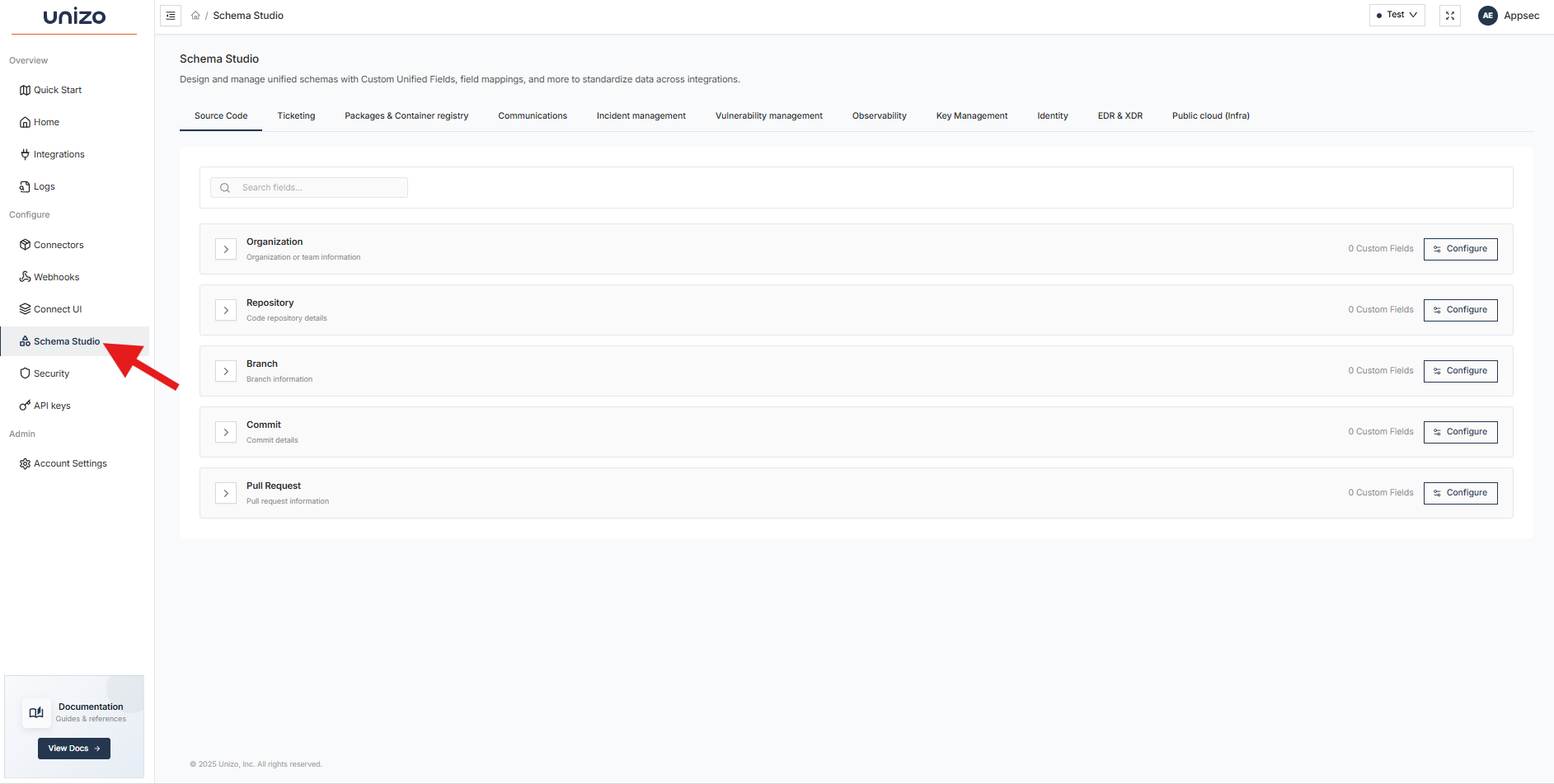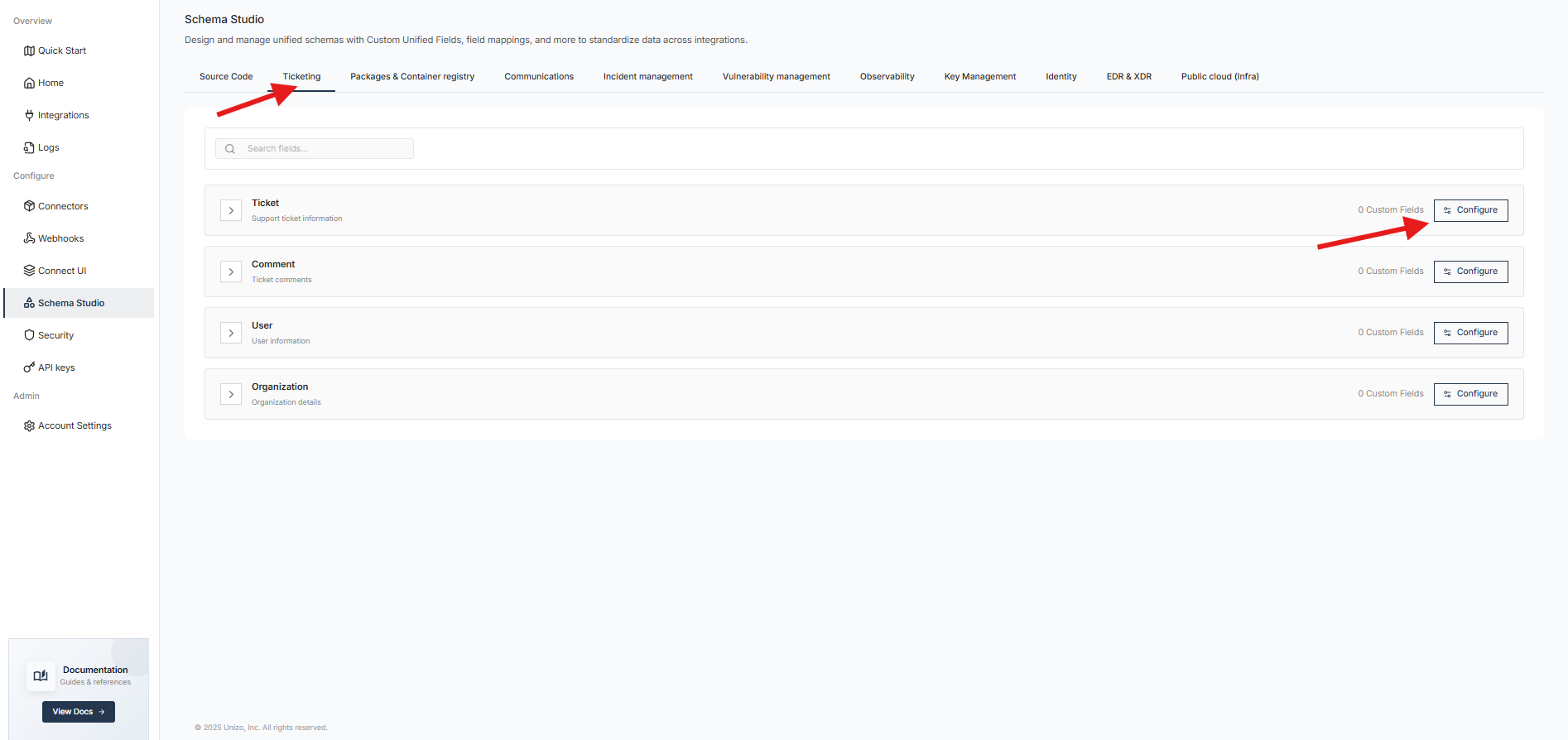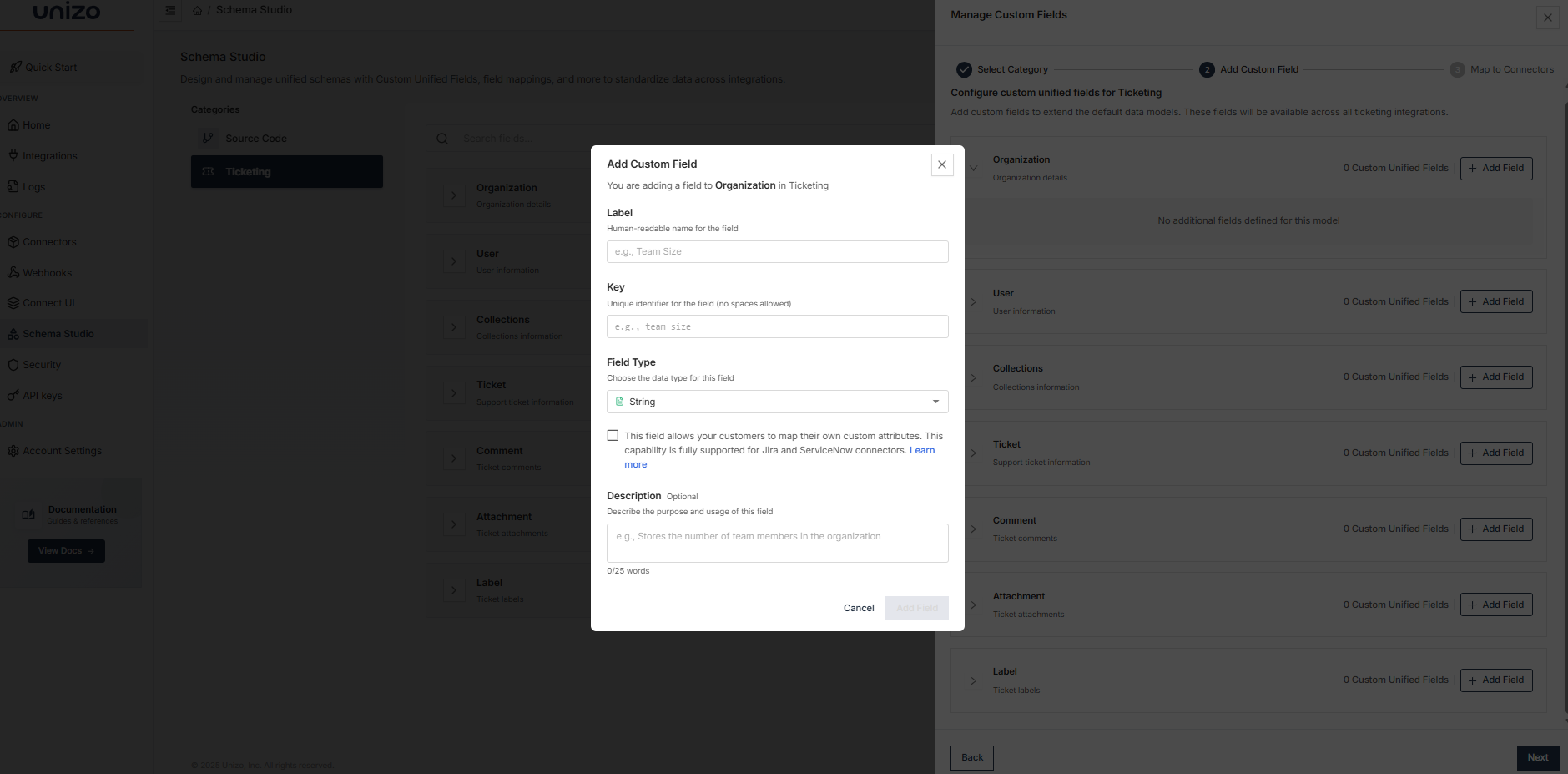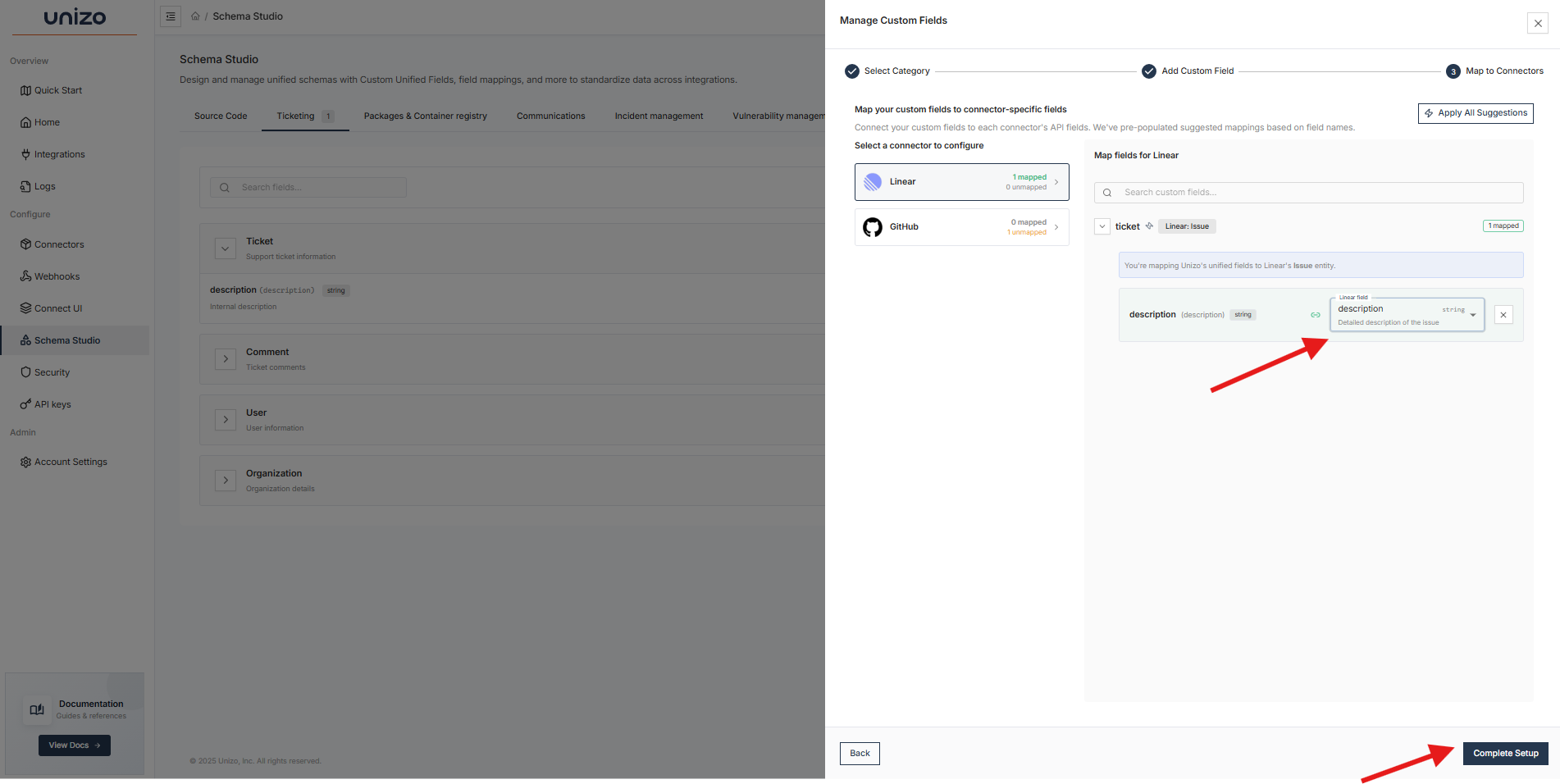Schema Studio
Schema Studio allows you to customize category-specific field mappings. This lets you extend the predefined common data model with custom fields while maintaining unified API consistency across all integrations.
Key Benefit: Extend your data models with custom fields that integrate seamlessly without breaking API compatibility.
Creating and Managing Fields
Open Schema Studio from the left navigation menu.

Access Schema Studio from the Console navigation
- Select the Category you want to extend.
- Click Configure to view the data model for that category.

Configure category-specific fields
Defining a Custom Unified Field
When creating a new field, provide:
- Key – The actual property key returned in the response
- Label, Field Type, and Description – Documentation metadata (not included in API responses)

Adding a custom unified field
Mapping to Connector Fields
After defining a custom unified field, map it to source fields from your connected systems.
Only connectors enabled on the Connectors page can be mapped.
- Select the source connector field to map
- Use Apply All Suggestions to auto-populate matching fields
- Save your configuration

Mapping custom fields to connector fields
Using Custom Unified Fields
Once mapping is complete, custom fields are automatically included in Unified API responses—no extra configuration needed.
Example Response
{
"data": [
{
"id": "10700",
"key": "IT-68",
"name": "test123 update",
"status": "To Do",
"priority": "High",
"type": "Task",
"targetUrl": "https://example.atlassian.net/rest/api/2/issue/10700",
"customUnifiedFields": {
"externalKey": {
"key": "IT-68"
}
},
"native_response": {
// Raw source system response
}
}
]
}
Response Components
| Field Category | Location | Description |
|---|---|---|
| Normalized Fields | Root level | Common data model attributes |
| Custom Fields | customUnifiedFields | User-defined field mappings |
| Source Data | native_response | Original connector response |
Note: The
customUnifiedFieldsobject contains all configured custom fields with their mapped values from source connectors.
Best Practices
Field Naming Conventions
- Use descriptive, consistent naming patterns
- Avoid special characters and spaces
- Consider future scalability in naming
Data Type Selection
- Choose appropriate data types for source compatibility
- Consider data validation requirements
Mapping Strategy
- Document all field mappings for maintenance
- Test mappings with sample data before production
- Establish validation procedures for data accuracy
Troubleshooting
Common Issues
Field Not Appearing in API Response
- Verify mapping configuration is complete
- Check connector compatibility
- Ensure field definition is saved properly
Data Type Mismatch
- Review source connector data types
- Adjust custom field type definition
- Test with sample data
For additional support, contact our team at support@unizo.ai.